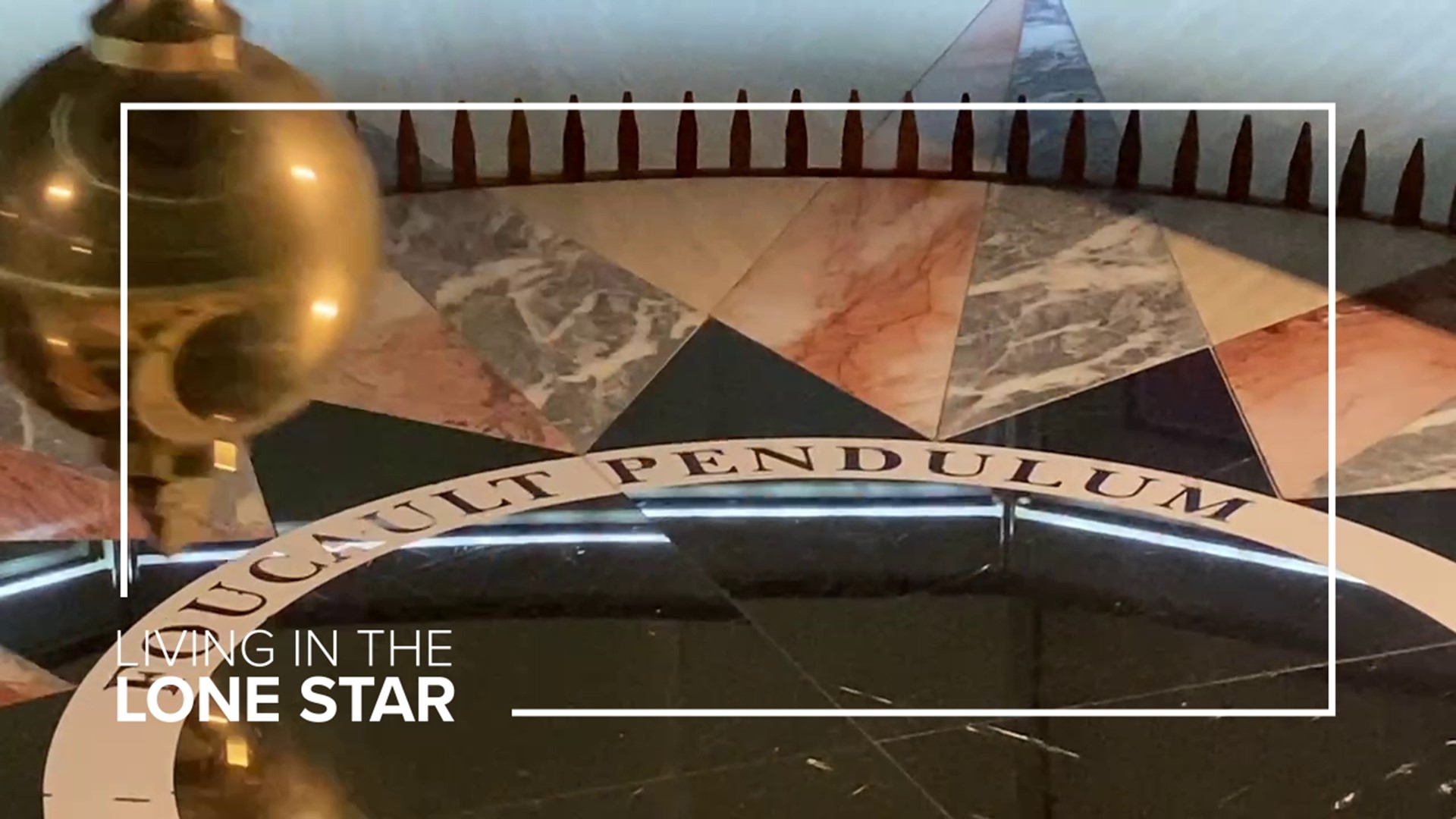HOUSTON — The Houston Museum of Natural Science is most assuredly a gem, but it's far from hidden. Instead, we're talking about a feature hidden in plain sight: Foucault's Pendulum.
Dropped right in the middle of the hallway off the exhibit hall's second entrance, the bob travels back and forth at all hours, knocking down a circle of pins near the outer rim of its swing. At any given time, you'll catch people hovering around its railing, staring at it intently.
"What's really cool is that it's only connected to the earth at one point. And when you go look at the pendulum use, look up, look up, look up, look up 60 feet up there, it's connected on a swivel," explains the museum's Dr. Carolyn Sumners.
The cable allows the bob to travel back and forth, but the most mind-blowing part is how it knocks down the ring of pins that surrounds it.
"The earth is turning under the pendulum," Sumners says.
During the course of every 7-second swing, the earth rotates just a tiny bit, enough for the pendulum to slowly make its way between pins, dropping about half of them each day.
"The pendulum’s trying to behave. It’s trying to stay in the same plane, but the Earth is turning under," says Sumners.
RELATED: HIDDEN GEM: Rice University secrets
French physicist Jean Bernard Leon Foucault invented the pendulum, a visual demonstration of the Earth's rotation, and first exhibited it at the World's Fair in Paris in 1851.
But you can't just hang a Foucault's Pendulum anywhere. Depending on where it is in the world, the Earth's rotation can change the bob's trajectory.
"At the poles, North and South, pendulums work great. At the equator, they don't at all," Sumners says. "A Foucault’s Pendulum just sits there at the equator. It swings, it doesn't go anywhere."
There are at least six Foucault’s Pendulums in Texas and dozens more worldwide in places like Chile, Spain and Tokyo. Though the saying goes “Everything’s bigger in Texas,” that doesn’t apply here. The largest Foucault’s Pendulum has a 900-pound bob hanging from a 70-foot cable and it’s in Oregon.
"People tend to respect it," says Sumners. "It’s pretty. It’s very elegant."
They don’t just respect it; back at HMNS, they get mesmerized by it.
"We have no exhibit that has the hang time of this one, where people are just sitting there waiting for a pin to drop," Sumners says. "I mean, waiting, waiting."
RELATED: HIDDEN GEM: Beer Can House
So the next time you visit the Houston Museum of Natural Science to check out the Ramses exhibit or Cockrell Butterfly Center, make sure to budget at least a few moments to watch the Earth's rotation in action.

